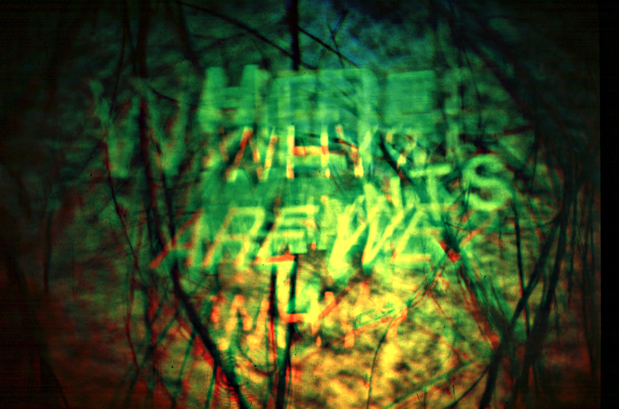T.H.: You refer to the use of nonverbal elements. One possible way of nonverbalization is always the making and the design of images. So how did new visual media change your working process, the way your artworks are experienced and their efficacy as a potential form of political criticism?
E.K.: It enriched the realm in which I could realize my project. The poems in verse, which were not written for the printed page, were written to be yelled out on the street. But the visual poetry could be printed successfully, those were written for the medium of the page, as exemplified by my artist’s book «Escracho,» from 1983. In the early 1980s I also made graffiti poems, in addition to t-shirt and sticker poems. Publishing in this alternative way made the poem a visual urban intervention, instead of a reclusive artifact demanding silent and immobile reading. I created my first digital poem in 1982, my first holographic poem in 1983, and I started to work online in 1985, but that’s another story.
T.H.: And how did that new realm help you to be more critical? Or was criticism only a minor aspect of your artistic development, since you have also developed new techniques, as exemplified by the aforementioned visual poems?
E.K.: The point is: what are the kinds of syntax that can respond to the world we live in, or more importantly, to the world we want to build? There’s a clear critical stance in asking this question and having it propel the work.
